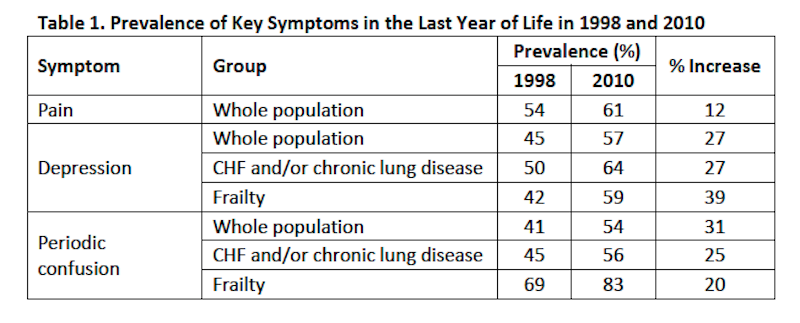The Program to Improve Eldercare (PIE) at Altarum Institute is preparing to award several small contracts to healthcare organizations, Public Health Departments, Area Agencies on Aging, and community-based organizations (CBOs) to carry out guided planning efforts to improve care for frail elders though more effective use of existing data concerning persons living in their catchment areas. The overall goal is to help local management define and generate measures of the local system’s performance concerning eldercare.
The contracts will not require collecting any new data. Each site will work with their own data that is already on hand to conduct aggregated analyses for their own community and region. The results of all funded contracts will form the basis for a national White Paper on how communities across the United States can monitor and manage the arrangements for care for elders living with disabilities and chronic conditions through improved use of aggregated data from multiple sources, such as clinical care, surveys, and use of community services.
Our goal is to empower communities and therefore to fund pilot projects that show high promise using several different approaches to community management of eldercare. Throughout, we aim to work with the sites to identify and document business models in use at the partner sites to support existing or improved system performance for providing adequate supportive care services.
This effort is funded by the Gordon and Betty Moore Foundation through Grant GBMF5662 to Altarum Institute (“Aggregating Care Plans to Manage Supportive Care Services for Elders”), Joanne Lynn, M.D., Principal Investigator.
We invite organizations to contact us to discuss this in order to determine their interest in participating. Please contact us via email to [email protected]. We will be happy to help you determine if your community would be a suitable candidate for these projects.
Contracts will be awarded in two phases.
- Site Readiness Assessment Contracts (Performed from July 2018 through November 2018)
- Site Pilot Implementation Contracts (to be completed by June 2019)
Site Readiness Assessment Contracts (Performed from July 2018 through November 2018)
- The Readiness Assessment contract phase will select up to ten geographically-focused organizations (“sites”) to receive a contract of $10,000 to participate in a structured strategic planning process to help the sites evaluate their current uses of data related to service provision for elders in their geographic region. We are looking for sites that at least begin to represent a geographic community’s population and that include at least some attention to both social supports and medical care. We are interested in entire catchment areas as a service delivery setting. With assistance from our national program staff, the sites will prepare a Readiness Assessment and strategic plan for improving quality and reducing cost for their eldercare system through better use of data and management information systems.
- Our national staff will work with each of the sites to prepare a customized project plan that works backward from the seven strategic planning outputs we are studying for each site. The list of outputs in seven study domains is summarized in Appendix A, below. At the end of the planning process, each site will receive a Readiness Assessment report that will form the basis of our selection process for the next round of contracts, which will provide limited funding toward some costs of actual implementations in some sites.
Site Pilot Implementation Contracts (to be completed by June 2019)
- This phase will award Pilot Implementation contracts at up to six sites to carry out pilot projects based on their Readiness Assessment results. The amount of the Pilot Implementation Contracts will vary depending on the projects proposed by the sites, but we expect that the minimum awards will be approximately $30,000 per site. Some sites may receive larger awards if their plans are complex. As with the Readiness Assessment contracts, our national staff will provide advisory assistance, but actual work will be done by the sites themselves to ensure that an ongoing capability is built locally in a sustainable manner. The Pilot Implementation contracts will probably not cover all implementation costs for every project. Local participation will be needed to ensure the pilot has some chance of being sustainable.
- If, at the end of the Pilot Implementation, a site has built a working data flow environment and demonstration management information system and has shown that the analytics coming from it are of actionable value to decisionmakers, our national staff will explore with them ways to seek continuation funding to help them transition the pilot system to an ongoing management reporting system. Continuation funding is not guaranteed as part of this effort, so finding ways to create sustainable business models is an important part of the process.
How to apply to partner in this work
To apply, send Email to [email protected] AND [email protected] with the following information:
- Subject line – “Community Eldercare Metrics, Planning”
- State the contact email(s) and phone number(s) of the person or team applying.
- Define the community you aim to serve.
- Briefly explain your vision, governance, and data available to the project.
- Send it soon! We will follow up with the more promising teams on a rolling basis and aim to have all teams identified within July 2018 and to have plans and contracts within August and September 2018, depending upon labor availability at the sites and in our staff.
Appendix A: Overview of Site Readiness Assessment Domains
The site Readiness Assessment planning process will provide sites with a $10,000 contract to work with our national staff to explore seven key domains that are essential to creation of an effective management reporting system for community eldercare. We do not expect that all sites will have advanced information technology capabilities in place. Information for this process is expected to be collected primarily by videoconferencing, with little or no travel expenditures for site personnel. The questions listed in this table will be explored during the Readiness Assessment contract period, and need not be answered as part of a contract application.
You may download a PDF file with details on the seven Site Readiness Assessment Domains.
You may download a PowerPoint presentation with further details on the process for Site Readiness Assessments and information on how to apply.

